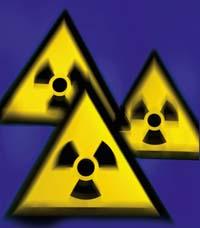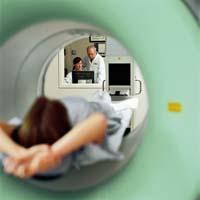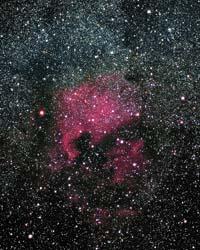Incidences of radioactivity in the network

The measurement networks of radiological levels monitor the levels of radioactivity of the medium and detect their incidences. At present, most countries have networks that measure radiological levels to monitor the environment and measure the impact of natural radioactivity. In 2001, the Basque Government, in collaboration with the Nuclear Security Council (CSN), established the ACBC surveillance network. This network is formed by the stations located in the three Basque capitals and the control center of Bilbao. The stations of Vitoria-Gasteiz and Bilbao are from the Basque Government, while that of San Sebastián is from the Nuclear Security Council.
Each of these stations has an automatic radiological station, an automatic weather station, a computer and two modems.
We have visited the most recent of the three stations of the CAPV, that of Bilbao, and we have known its alert station. This station was installed at the School of Engineering of Bilbao of the UPV/EHU in 2001. Natalia Alegría Gutierrez, a researcher at the Department of Nuclear Engineering and Fluid Mechanics of the Technical School of Bilbao.
Control and alert networks

Depending on the frequency of sampling, these networks are classified into two groups, on the one hand, control networks and on the other, alert networks. The main objective of the control networks is the measurement of both natural and artificial radioactivity in the air, water, land and food, in order to quantify and analyze the potential effects on the environment and the health of living beings. Alert networks inform in real time of abnormal values. The latter perform the analysis of air or water samples and take samples at a frequency of less than an hour. It works for 24 hours.
According to engineer Natalia Alegría, this means constant management. "The computer of each station has a special real-time data program that receives data every ten minutes and every two minutes in the case of the alarm," he adds. These data are stored in text files. These files are sent to the central computer of the Control Center of Bilbao through the intranet of the UPV/EHU in the case of the stations of Bilbao and Vitoria-Gasteiz and by Internet in the case of the station of San Sebastian. When the Intranet or Internet fails, this data is sent to the central computer of Bilbao thanks to the help of the modem.
The average dose rate data is published daily on the website of the Radioactive Facilities Service of the Basque Government. Daily they receive 144 data from each parameter of each station of the three Basque provinces in the Superior Technical School of Bilbao. That is, approximately 56,000 data per parameter and station per year.
, and radiations

The dose rate is mainly measured. That is, the amount of energy that is received in a unit of time. However, it is important to measure more than one significant variable to obtain more complete information. In this sense, in addition to the dose rate, they measure alpha, beta and gamma radiations, among others. In fact, depending on the radioactive isotope that disintegrates, it releases certain radiation. Therefore, the measure of these radiations would allow for information on isotopes.
Alpha particles are heavy particles from the disintegration of heavy elements such as uranium, radius, radon and plutonium atoms (for example, helium nuclei, formed by two protons and two neutrons). Due to their large mass, they are able to make an air tour of two centimeters and cannot cross a sheet of paper or epidermis. If a substance that emits Alpha radiation is inhaled, ingested, or introduced into the body through the blood, it can be harmful.
The penetration capacity of beta radiation (formed by particles of mass similar to electrons) is higher than that of alpha particles. It is able to travel several meters in the air, but in the water barely reaches a few centimeters. Also, an aluminum foil, the glass of the windows or the garments that we wear do not allow to cross this type of radiation. However, it can cross the skin without clothing, so the penetration of particles that emit beta radiation inside the body would damage the internal tissues.
The penetration capacity of gamma radiation is significantly higher than in both types of radiation. It has a lot of energy. You can get far in the air and to stop it you need barriers of dense materials such as lead or concrete. Gamma radiation easily crosses the skin and other organic substances, so it can cause serious damage to the internal organs.

Undoubtedly, it is convenient that all these radiations, and in general the levels of radioactivity of the medium, are controlled. Receive the data daily, manage them correctly and take measures in case of alarm. "The School of Engineering of Bilbao has been working for seven years and during these seven years we have not received any real alarm," explains Natalia Alegría. "However, in some cases we have received false alarms, among which is the increase in the level of radioactivity due to rain," he adds. In this regard, he has developed a methodology to separate natural radiation from abnormal values, in a doctoral thesis presented by industrial engineer Natalia Alegría at the UPV.
To do this, it has taken into account the dose rate of gamma radiation, that is, the amount of energy we receive in a unit of time. The first objective of your research has been to determine what are the normal radiation values, that is, which come from natural sources of radiation.
It has chronologically ordered the historical values of the dose rate, observing that they remain constant, but has also seen that the meteorological variables cause changes. That is, the values increase in times of precipitation. This is due to the fact that the rain carries the radioactivity in the air (or the roof where the probe/detector is located) to the terrestrial surface, which causes an increase in the dose rate, although the increase is not due to a radiological phenomenon. For this reason, the researcher has developed a model of calculation to illustrate the increase in radioactivity in wet time.
Thanks to this doctor's work, the measurement network of the radiological level of the Basque Country is more sensitive and has been able to reduce the number of alarms so that involuntary radiological events do not occur. Currently, the alarms of this network have their origin always in an external agent and not in the increase of natural radioactivity by precipitation.

Although to date there has been no real case of alarm, on the one hand, the computers would be programmed to receive data every two minutes, and on the other hand, from the station in which this alarm has been received, a telephone call would be received at the headquarters of Bilbao. They would also receive the value of the measured radiation level. "From that moment, we will analyze the data and take measures to control them," said Natalia Alegría. "We would inform the Basque Government and the Nuclear Security Council, which would open the news in the European Union." In any case, as so far, if there were no, better.








